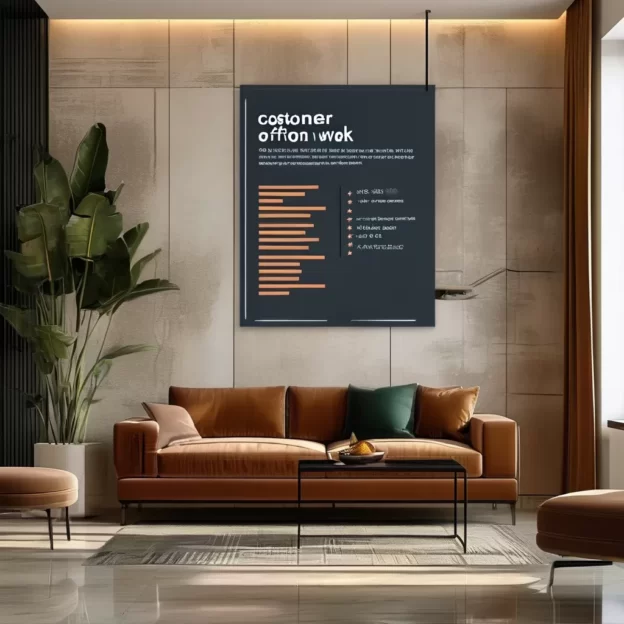Unlock the Power of Customer Feedback: A Guide to Collection and Action
Imagine a world where your decisions are not just based on intuition or market trends, but are guided by the very people who use your products and services every day. This is the world unlocked by harnessing the power of customer feedback. Beyond simple reviews or occasional comments, customer feedback represents a rich tapestry of insights into customer satisfaction, pain points, unmet needs, and areas ripe for improvement. It’s a direct line to your customers’ minds and hearts, offering invaluable intelligence that can transform your business.
Why Customer Feedback Matters: More Than Just Listening
Collecting customer feedback isn’t just an act of good customer service; it’s a strategic imperative for any forward-thinking business. Ignoring it is akin to sailing without a compass – you might be moving, but you won’t know the direction you’re heading or whether you’re reaching your destination.
At its core, customer feedback is information provided by customers about their experience with a product or service. It encompasses their opinions, reactions, preferences, complaints, and suggestions. The power lies in its authenticity and directness. It offers:
- Validation and Confirmation: Does what you believe your customers want align with their actual needs? Feedback confirms or corrects your assumptions.
- Identification of Pain Points: Where are customers struggling? What aspects of your product or service are causing frustration? Feedback illuminates these hidden obstacles.
- Discovery of Hidden Opportunities: Customers might suggest features they wish existed, products they desire, or problems they haven’t articulated but desperately need solving. This is often where innovation sparks.
- Enhancement of Product/Service Quality: Direct input helps refine existing offerings, ensuring they meet customer expectations and stay ahead of the competition.
- Improvement of Customer Experience (CX): Feedback highlights specific touchpoints within the customer journey that need attention, leading to smoother, more satisfying interactions.
- Increased Customer Loyalty and Retention: When customers feel heard and see their feedback acted upon, they develop a sense of partnership and loyalty. This reduces churn and increases lifetime value.
- Boosted Employee Morale: Sharing positive feedback and demonstrating that customer opinions matter can significantly boost morale and motivation within your teams.
- Data-Driven Decision Making: Aggregating and analyzing feedback provides concrete data to inform strategic decisions, product roadmaps, marketing campaigns, and operational improvements.
Collecting Customer Feedback: Best Practices and Methods
Now that we understand the immense value of customer feedback, the next challenge is collecting it effectively. The goal isn’t just to gather data, but to gather meaningful, actionable insights. Best practices emphasize keeping it simple, choosing the right moment, and ensuring customers feel comfortable sharing their honest opinions.
Several methods exist for collecting customer feedback, each suited to different contexts and purposes:
Surveys: Structured Insights from Your Audience
Surveys are a powerful tool for gathering quantitative and qualitative data. They can be tailored to specific questions and target specific customer segments.
Best practices for effective surveys include:
- Keep it Concise and Focused: Respect your customer’s time. Clearly state the survey’s purpose and only ask for information relevant to that goal. Aim for a completion time of 2-5 minutes.
- Use Clear and Simple Language: Avoid jargon, complex questions, and overly long sentences. Ensure questions are unambiguous.
- Mix Question Types: Combine multiple-choice and Likert scale questions (e.g., rating scales from 1-5) for quantitative data with open-ended questions for qualitative insights and detailed suggestions.
- Targeted Distribution: Don’t blast surveys indiscriminately. Offer them post-purchase, after customer support interactions, or to specific segments (e.g., power users, loyal customers).
- Utilize the Right Channels: Distribute surveys via email, your website (exit pop-ups are effective), mobile apps, social media, or even SMS.
- Provide Incentives (Optional but Effective): Small tokens of appreciation, like a discount on their next purchase, entry into a draw, or even just a simple thank you, can significantly increase response rates.
Net Promoter Score (NPS): Measuring Advocacy and Loyalty
Net Promoter Score is a simple yet powerful metric that measures customer willingness to recommend your brand to others. It’s based on asking customers: “On a scale of 0 to 10, how likely are you to recommend [Company Name] to a friend or colleague?” Respondents are categorized as Detractors (0-6), Passives (7-9), or Promoters (10-10).
The NPS score is calculated by subtracting the percentage of Detractors from the percentage of Promoters. While easy to calculate, NPS provides valuable insights into overall customer loyalty and advocacy. Follow-up questions can uncover the reasons behind the score.
Social Media Listening: Monitoring the Digital Watercooler
In today’s digital age, customers frequently share their experiences, praise, complaints, and questions on social media platforms. Social media listening involves actively monitoring these platforms for mentions of your brand, products, or services.
Tools dedicated to social media monitoring can help track conversations, sentiment, and specific keywords. This method is excellent for identifying: Here are some options for an attractive article title including the keyword “constructive feedback”:
1. **Unlock Powerful Conversations: A Guide to Giving Constructive Feedback** (13 words)
2. **Master the Art of Constructive Feedback: Tips for Effective Growth** (14 words)
3. **The Crucial Skill: How to Deliver Meaningful Constructive Feedback** (15 words)
4. **Beyond Criticism: Making Constructive Feedback Work for Everyone Share Your Kroger.com Feedback & Unlock Cashback Rewards!
- Public sentiment and brand perception
- Emerging trends and issues
- Customer praise and testimonials
- Complaints and areas needing immediate attention
- Potential market research insights
However, managing social media feedback requires resources and expertise to filter signal from noise and handle potentially sensitive situations promptly.
Customer Reviews and Ratings: The Public Square
Platforms like app stores, review sites (Google Business, Yelp, Trustpilot), and your own website provide spaces for customers to leave reviews and ratings. These are powerful indicators of customer satisfaction and can significantly influence potential customers’ decisions.
Encourage customers to leave reviews by:
- Providing clear instructions on how to leave a review
- Timing the request appropriately (e.g., after a positive experience)
- Using automated reminders (respectfully)
- Responding publicly and professionally to all reviews, especially negative ones
User Interviews and Feedback Sessions: Deep Dives
For more in-depth understanding, consider conducting user interviews or feedback sessions. This qualitative method involves directly conversing with customers to understand their experiences, needs, and challenges.
This approach is particularly valuable for: **Unlock Your Voice: Share Kroger.com Feedback & Help Shape Your Local Store Experience**
- Exploring new ideas or features
- Understanding complex user journeys
- Identifying usability issues
- Gathering detailed feedback on specific aspects of your offering
These sessions require skilled facilitation but can yield incredibly rich and nuanced insights.
Turning Feedback into Action: The Critical Next Step
Collecting customer feedback is only half the battle. The true power is unlocked when you translate that feedback into tangible action. This requires a systematic approach and a commitment from leadership.
Ignoring feedback, even occasionally, sends a message that customer opinions aren’t valued. Consistently acting on feedback, however, demonstrates a genuine commitment to improvement and customer-centricity.
Here’s how to move from feedback collection to meaningful action:
Establish Clear Processes and Ownership
Create defined workflows for handling feedback. Who receives the feedback? Who analyzes it? Who owns the implementation of changes? Assigning clear responsibility ensures feedback doesn’t get lost in the backlog.
Analyze and Prioritize Feedback
Don’t just store feedback; analyze it. Look for patterns, recurring themes, and common pain points. Use data analysis techniques to identify the most frequent issues and the most requested features.
Consider factors like:
- Impact: How many customers are affected by this feedback? What is the potential impact on revenue, retention, or brand reputation?
- Effort: How difficult or costly is it to implement the suggested change?
- Alignment with Goals: Does addressing this feedback align with your company’s strategic objectives?
- Customer Sentiment: Is the feedback overwhelmingly positive or
References
- What is Customer Feedback? How to Collect It and Best Examples
- Customer feedback: 7 strategies to collect and leverage it – Zendesk
- The Power Of Customer Feedback – Forbes
- How To Collect and Act on Customer Service Feedback – Help Scout
- Why Customer Feedback Is Important: The Ultimate Guide – Survicate


